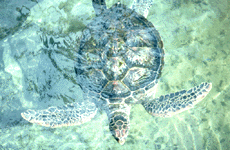- Home
- About S&T
- Taxa/Organisms
- Ecosystems
- Issues
- Methods & Tools
- Reports & Publications
- Location
- Search
Publisher: USGS | Science Center: Patuxent Wildlife Research Center (PWRC, Laurel) | Format: URL
www.pwrc.usgs.gov — An overview of research that addresses the issue of amphibian decline, assesses relationships between amphibian distribution and abundance and environmental factors in the parks, proposes standardized, long-term monitoring protocols, and evaluates and validates amphibian monitoring techniques at Shenandoah and Big Bend National Parks. The project More...
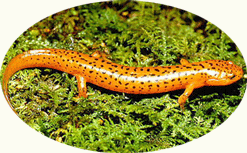
Publisher: USGS | Science Center: Patuxent Wildlife Research Center (PWRC, Laurel) | Format: URL
igsaceeswb00.er.usgs.gov:8080 — From the Web site: "The Amphibian Research and Monitoring Initiative (ARMI) National Atlas for Amphibian Distributions (or simply, the ARMI Atlas), is a compilation of current and historic records of amphibian occurrences. These records are from published, peer-reviewed scientific literature, museum records, state and regional herpetological More...

Publisher: NBII | Format: URL
frogweb.nbii.gov — NARCAM is a website reporting system for malformed amphibian malformations. The site is a portal of archives for malformed amphibian phenomena reports in the United States and Canada. Users can submit a Report to NARCAM, view malformations data, with access to maps of malformation occurrences. You can also learn more about the UV radiation, More...
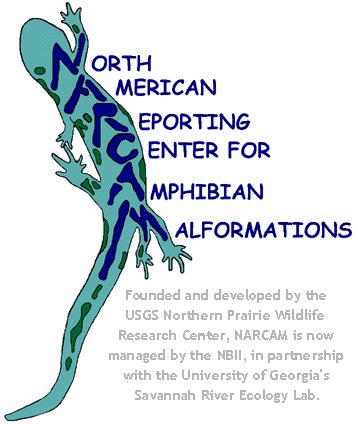
Publisher: Center for Biological Informatics | Format: URL
www.frogweb.gov — Amphibian population declines are particularly serious in California, the Rocky Mountains, the Southwest, and Puerto Rico. This website addresses this concern by linking to resources about Amphibian Declines, Amphibian malformations, and resources to what can be done to help. There are additional links to species information and resources for More...

Publisher: USGS | Science Center: Upper Midwest Environmental Sciences Center (UMESC, LaCrosse) | Format: URL
www.umesc.usgs.gov — Constructed farm ponds represent significant breeding, rearing, and overwintering habitat for amphibians in the Driftless Area Ecoregion of southeastern Minnesota, western Wisconsin, and northeastern Iowa, a landscape where natural wetlands are scarce. Farm ponds are to prevent soil erosion and create wildlife habitat, yet no studies have been More...
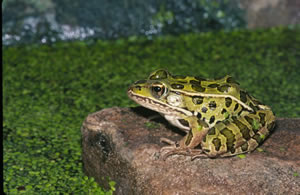
Publisher: USGS | Science Center: Fort Collins Science Center (FORT, Ft. Collins) | Format: URL
www.fort.usgs.gov — At high elevations, and in the nearby Capitan and White mountains in alpine tundra habitat, the Sacramento Mountain salamander occurs. This issue overview looks at size-class distributions of salamanders, showing that juveniles comprise a significantly smaller proportion of all salamanders on logged plots, suggesting that populations on logged More...

Publisher: USGS | Science Center: Forest and Rangeland Ecosystem Science Center (FRESC, Corvallis) | Format: URL
fresc.usgs.gov — The National Park Service has stated that declining amphibian populations are the top priority for research in the National Park System. Salamanders are a native vertebrate predator in small, western, high-mountain lakes naturally barren of fish. During this century many western high-mountain lakes were stocked with trout. These introduced fish More...

Publisher: USGS | Format: URL
pubs.usgs.gov — The steps necessary to conduct a pitfall trapping survey for small terrestrial vertebrates are presented. Descriptions of the materials needed and the methods to build trapping equipment from raw materials are discussed. Recommended data collection techniques are given along with suggested data fields. Animal specimen processing procedures, More...

Publisher: USGS | Science Center: Western Ecological Research Center (WERC, Sacramento) | Format: URL
www.werc.usgs.gov — This site is a field guide to the reptiles and amphibians of coastal Southern California, including species accounts, illustrations of tadpoles, and images of different habitat types. The guide also contains a glossary of terms, a map of the study area, and types of habitats.
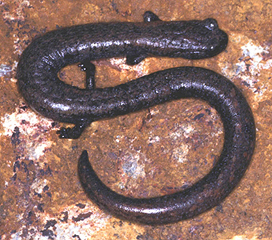
Publisher: USGS | Science Center: Forest and Rangeland Ecosystem Science Center (FRESC, Corvallis) | Format: URL
fresc.usgs.gov — An overview of research that defines the distribution and habitat requirements of amphibians and reptiles in southern Oregon, mostly in old-growth forests or alpine habitats. Includes links to USGS publications resulting from this research.

Publisher: USGS | Science Center: Forest and Rangeland Ecosystem Science Center (FRESC, Corvallis) | Format: URL
fresc.usgs.gov — The National Park Service has stated that declining amphibian populations are the top priority for research in the National Park System. Salamanders are a native vertebrate predator in high-mountain lakes throughout the western US, especially in many small lakes naturally barren of fish. This issue overview demonstrates the potential for using More...

Publisher: USGS | Science Center: Western Ecological Research Center (WERC, Sacramento) | Format: URL
www.werc.usgs.gov — Native amphibian and reptile populations worldwide are under threat from exotic invasive species of plants and animals, including other reptiles and amphibians. As habitats are changed and plant community organization is modified by exotic species, delicate relationships between plants and animals are altered or eliminated, creating a negative More...
